The year was 2000, and 28-year-old James “Rocky” Contos had just finished a Ph.D. in Neuroscience at the University of California San Diego. At this point in his academic career, it would have been typical to go off to do a postdoc somewhere else. Boston, Seattle, Washington, D.C. But Contos was still hanging around San Diego, loath to leave.
His girlfriend (now wife) Barb still had a couple more years in grad school, so he had no reason to run off. After getting into paddling during his undergrad at UC Davis, Contos was spending more and more time on the river, often alone. As he grew older, and friends became tied down with jobs and families and other obligations, it was hard to find people to paddle with him, so he started running rivers alone more and more frequently.
[gallery type="slideshow" size="full" ids="17767,17768,17760"]
At the time, there were American paddlers venturing into Mexico, but everyone was typically going down in the dry season (winter), when the rain wasn’t falling. As a result, the rivers that had been paddled at the time were mostly concentrated in the eastern region of the country, along the Gulf of Mexico, because these were the ones flowing during the dry season. 80% of Mexican rivers flowed into the Pacific, however, and were monsoon fed, so their flow only was runnable from the summer until the fall. As a result, almost none of these rivers had seen a descent.

Aside from a few brief jaunts into Baja California while growing up in San Diego, Contos had never been out of the country, and while he spoke some Spanish, he was far from fluent. He used his grad school stipend to buy a Toyota pickup with a little camper shell. Then, on June 30th, he headed south.
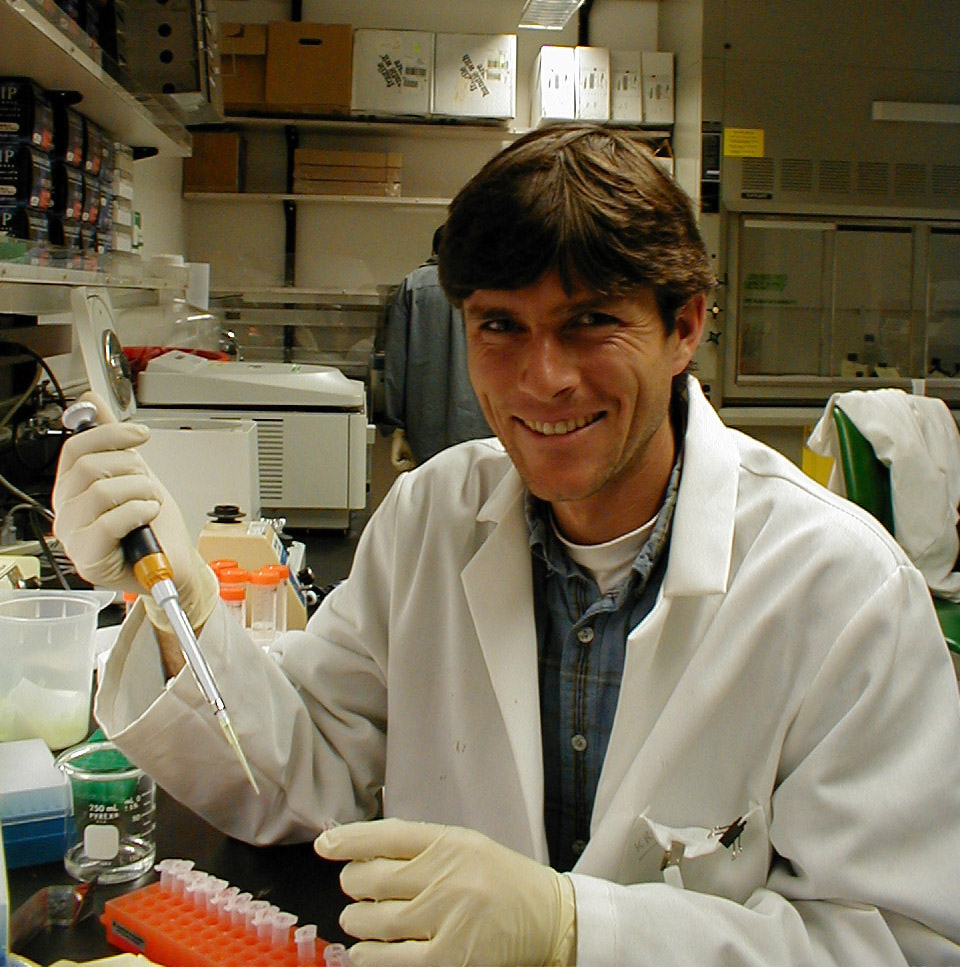
He drove to Mazatlán, a town on the Pacific about a hundred miles west of Durango, and enrolled in a language school. His language school set him up with a homestay with a Mexican family. After a couple of weeks of settling in, he began scouring the area for rivers to run, and there were plenty. Contos paid one of the men in his homestay family to drop him at the put in for various rivers. He took notes on a small tape recorder, and brought photocopies of 1:250000 topos to mark rapids and features he encountered, spending four to eight days paddling and camping on any one river, before being picked up at the coast.
Out of the fourteen rivers he ran in those three and a half months, twelve were first descents and eleven of those first descents were solo (he completed the first descent of the Ameca River with his girlfriend in a cataraft). All told, of the 100 or so days he was in Mexico, Contos spent 52 days on the river, the vast majority alone.
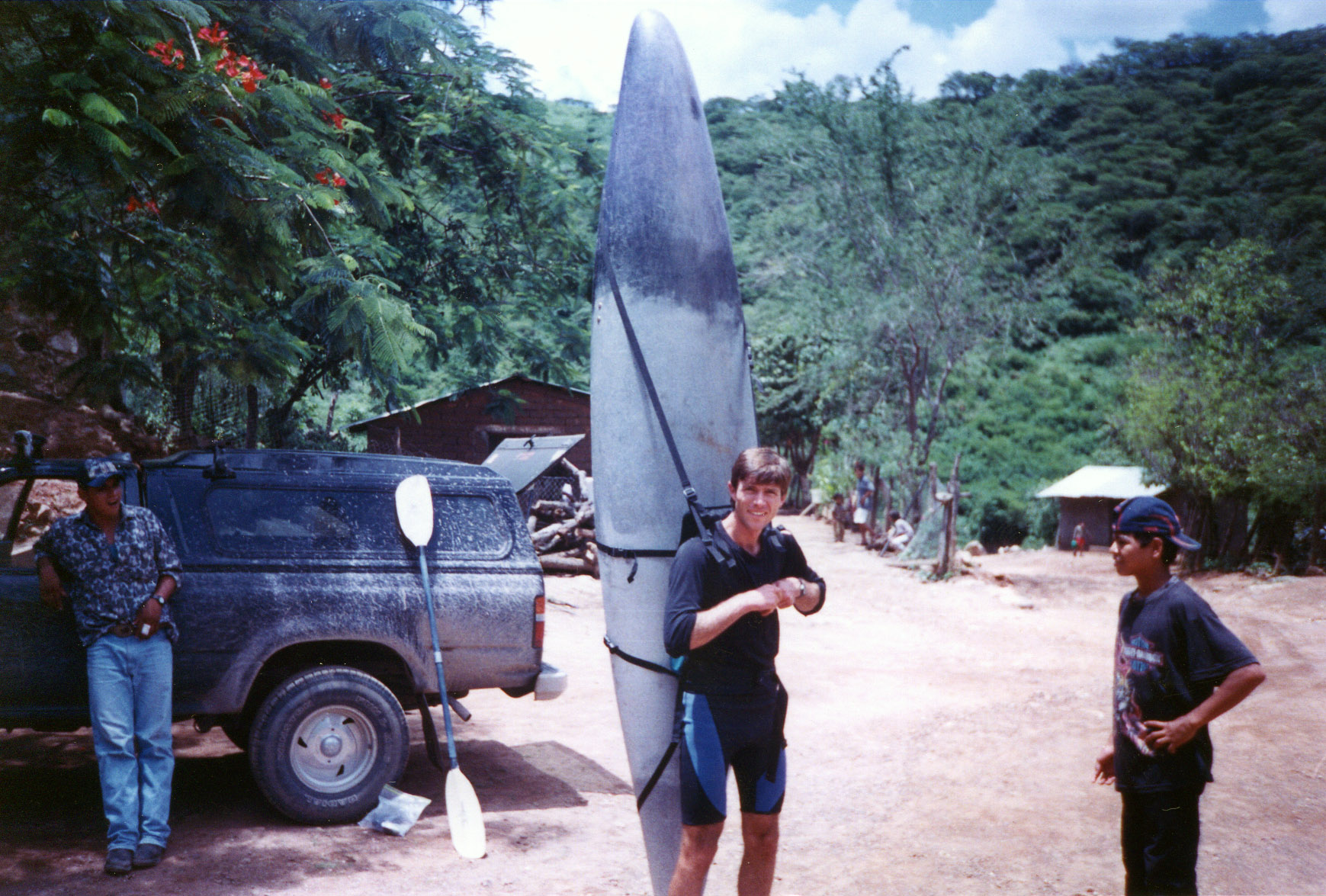
“I didn't have enough money to buy the newest kayaks on the market, so I was using ones that were five or six years old,” Contos said. “I became known as the guy who was always using a used, older boat.” Still, it served him well, because all his expeditions were extensive, multi-day trips, and he was able to pull out the foam filler that was standard in the back of older kayaks at the time and use that back compartment to stow all his gear. “A Wavesport Extreme, Prijon Rockit, I might’ve had a Fusion with me… I was using boats that paddlers at the time would look at and say, ‘Eh, that’s not the best design now…’ but it got me through.”

In Cartel Land
The rivers weren’t all difficult. “Most of ‘em were Class III or IV,” Contos told me. But these were remote areas, with completely unknown rapids and features, and the hazards didn’t only come from the rivers themselves. “This was a well-known hotbed of the Sinaloa Cartel,” said Contos. “It was an area where they cultivated and grew a lot of marijuana, and also poppy, for heroin.” The perfect spots for marijuana and poppy plantations, ensconced, high in the mountains and valleys, out of sight of the general public, also happened to be the same areas where Contos was often paddling. He came upon marijuana plantations often, and poppy plantations a few times, too.
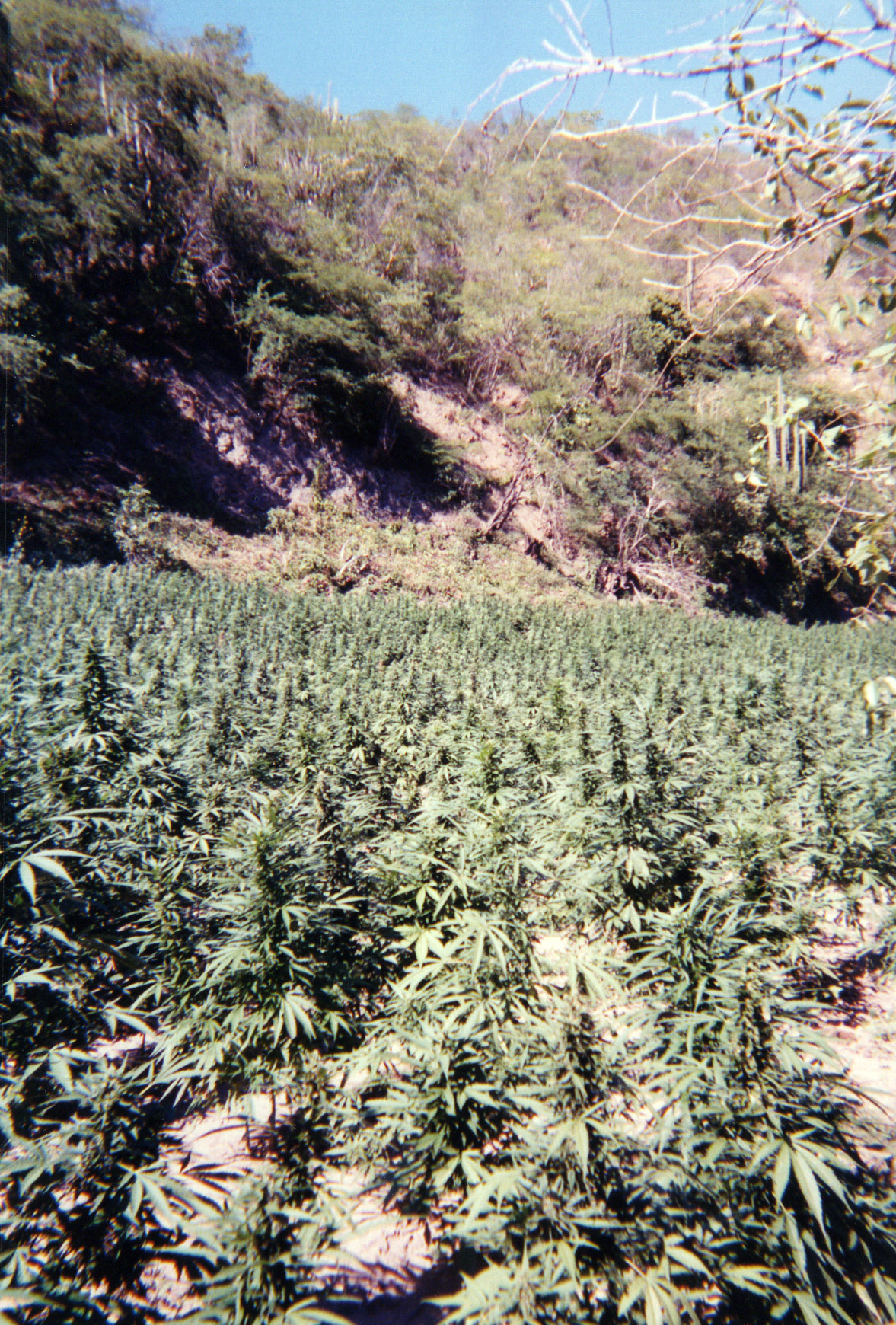
The growers were generally friendly, but a few were suspicious of him. On the Rio Presidio, a few men saw him put in and intercepted him around 20 kilometers downstream. A gunman brought him over to the side. “He was talking to me pretty hostile, asking ‘What are you doing here? What are you after?’ but I told him I wasn’t after anything, that I was just interested in paddling the rivers.” Eventually, he convinced the narco that he wasn’t DEA, showing him how he surfed the rapids.

On a trip down the Rio Grande de Santiago, the largest river in the region, he encountered one of the latter breed. The Santiago had already been run, but it was early in the season and many of the other rivers Contos wanted to run didn’t have enough water in them yet, so he decided to paddle it. While paddling, he came across a man on horseback on the shore, with a rifle slung across his back. He called Contos over to the shore and started questioning him. “I told him I’m just a kayaker, exploring the canyons and rivers, paddling the rapids.” Then the man got kind of friendly, and he began to proposition Contos. “He’s like, ‘This is a good way we can transport some of this stuff down, avoiding the highway checkpoints.’ He wanted me to come back and float down the river and carry bundles of dried marijuana down the river. He gave me his gun to hold. Contos exchanged contact info with the man to placate him, but he knew he wouldn’t be coming back.
“They [the narcos] were down there then, and they’re down there now. I’m sure some of them are nasty people,” Contos said. “But my experience was that once they realize who you are and what you're doing, at least in my case, they didn’t care at all.”
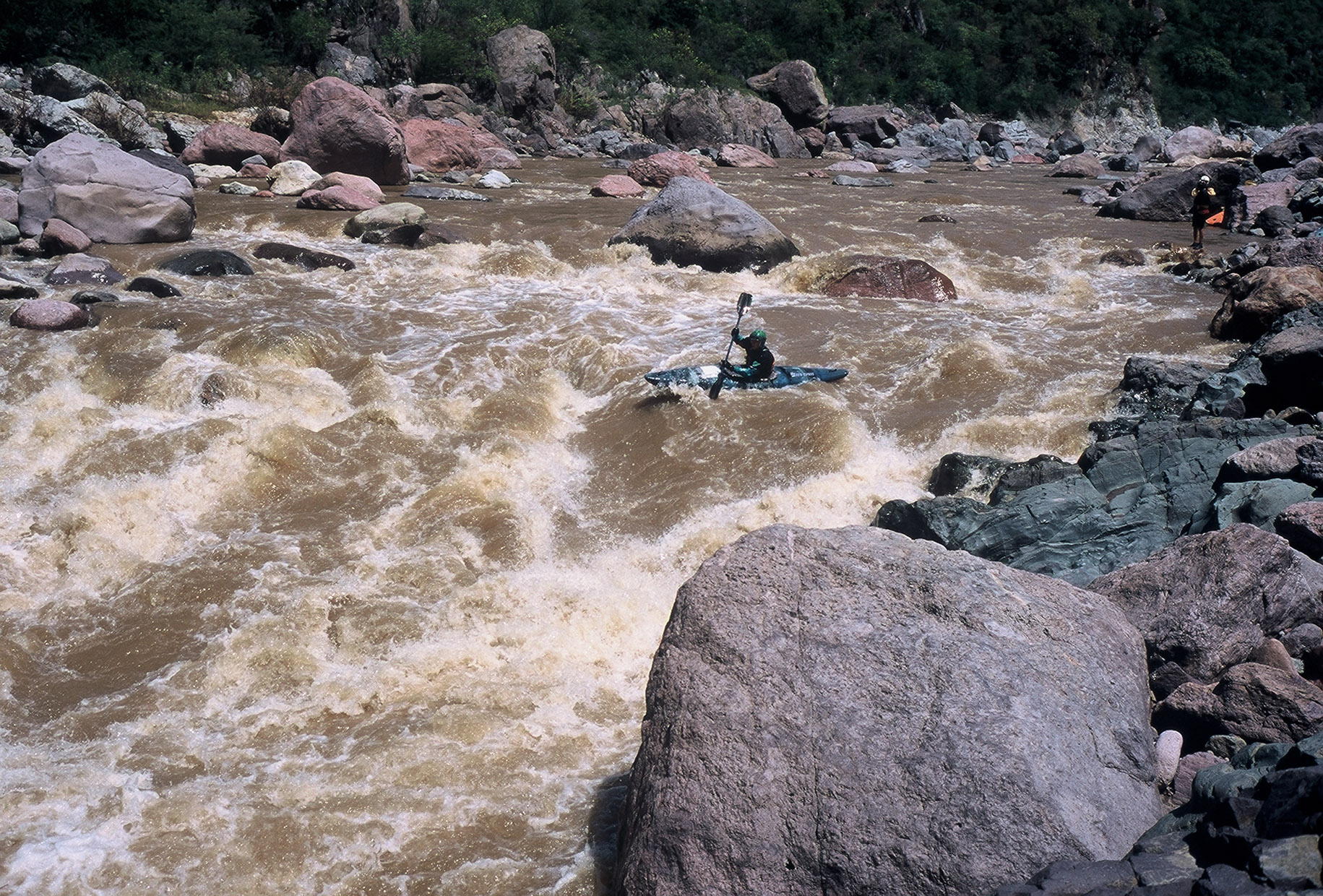
Taking the Sneak Line
Some of the rivers were quite difficult.
Rising high in the plateau of the west-central Mexican state of Zacatecas, at 6600 feet, the Rio Atengo wasn’t difficult on paper, featuring a mix of Class III and IV’s (with a few V’s that could be portaged). Nevertheless, a unique mixture of rock types, such as rhyolite, breccia, and andesite, gave rise to clumps of enormous boulders in the river. Paddling through these incessant, treacherous jumbles of boulders, left him white-knuckling his paddle constantly. “I named one rapid on that river ‘Not Again,’ because I never wanted to paddle that thing again in my life,” Contos told me.

He paddled it again two years later.
"Sandstone walls of various colors came down to the river, making it an area reminiscent of the famed canyons of Utah … Fine camp spots were found on sandbars deposited by the periodic floods. Majestic sabino (cypress) trees lined the banks in many places with trunks that were often >4 m in diameter." -Rocky Contos’ on his second trip down the Rio Atengo, in 2002, with Peter Dayton and Art Gidel.
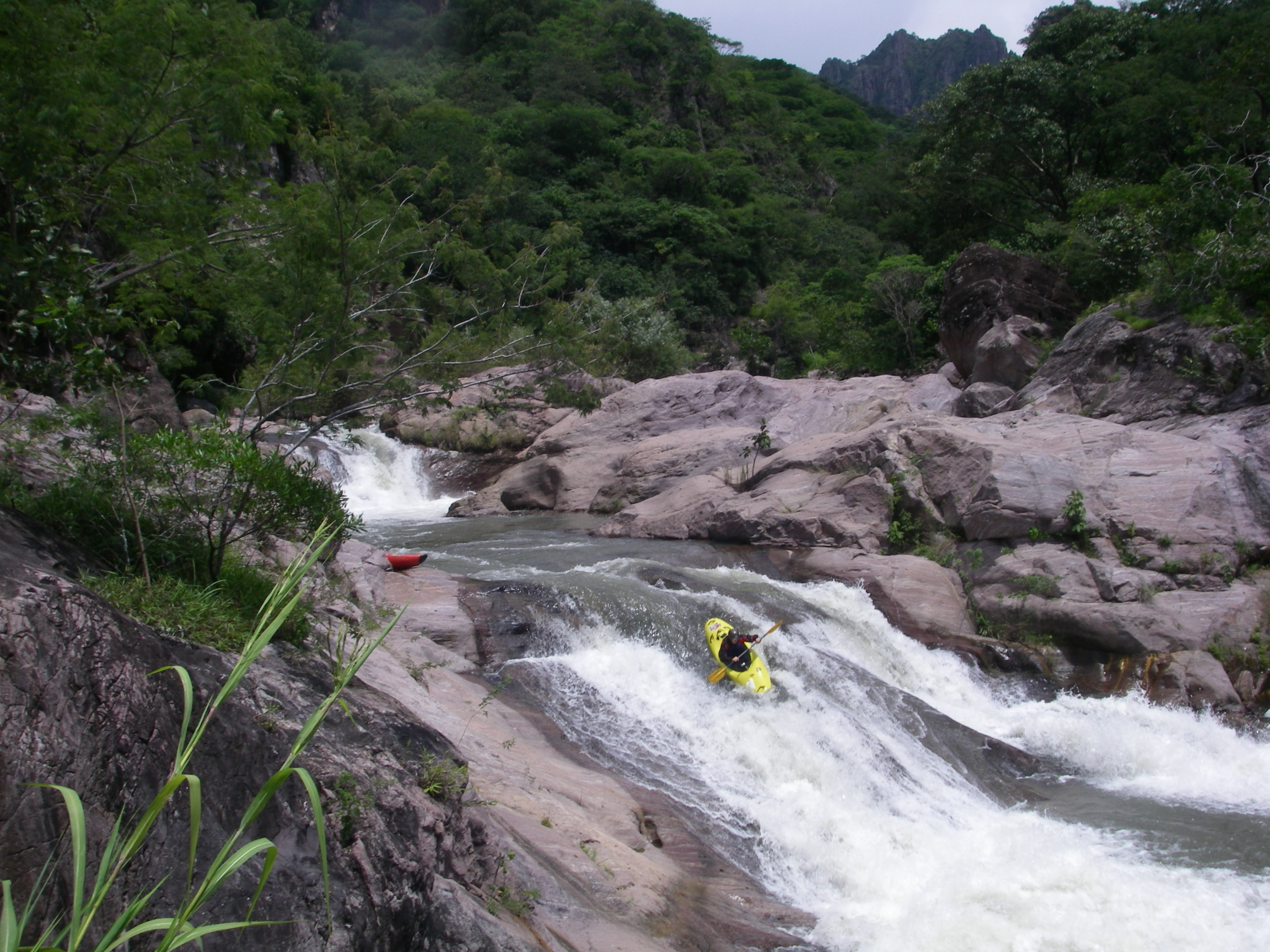
The longest and deepest section of the Atengo was called the Barranca Atengo, a 15-kilometer long chasm that included a memorable footbridge and one the toughest rapids: Tres Reyes (Three Kings), which Contos named for three distinct drops in a majestic setting.
One of the most dangerous rivers in the region, the Mezquital, had been partially run before, in the dry season, from a lower point by a group of three Americans. During that expedition, some 14 years prior, one of the paddlers became pinned under a jumble of boulders. His friends barely managed to extract him, but both his legs were broken. It took the group three days to get their friend to a hospital, and both his legs had to be amputated.
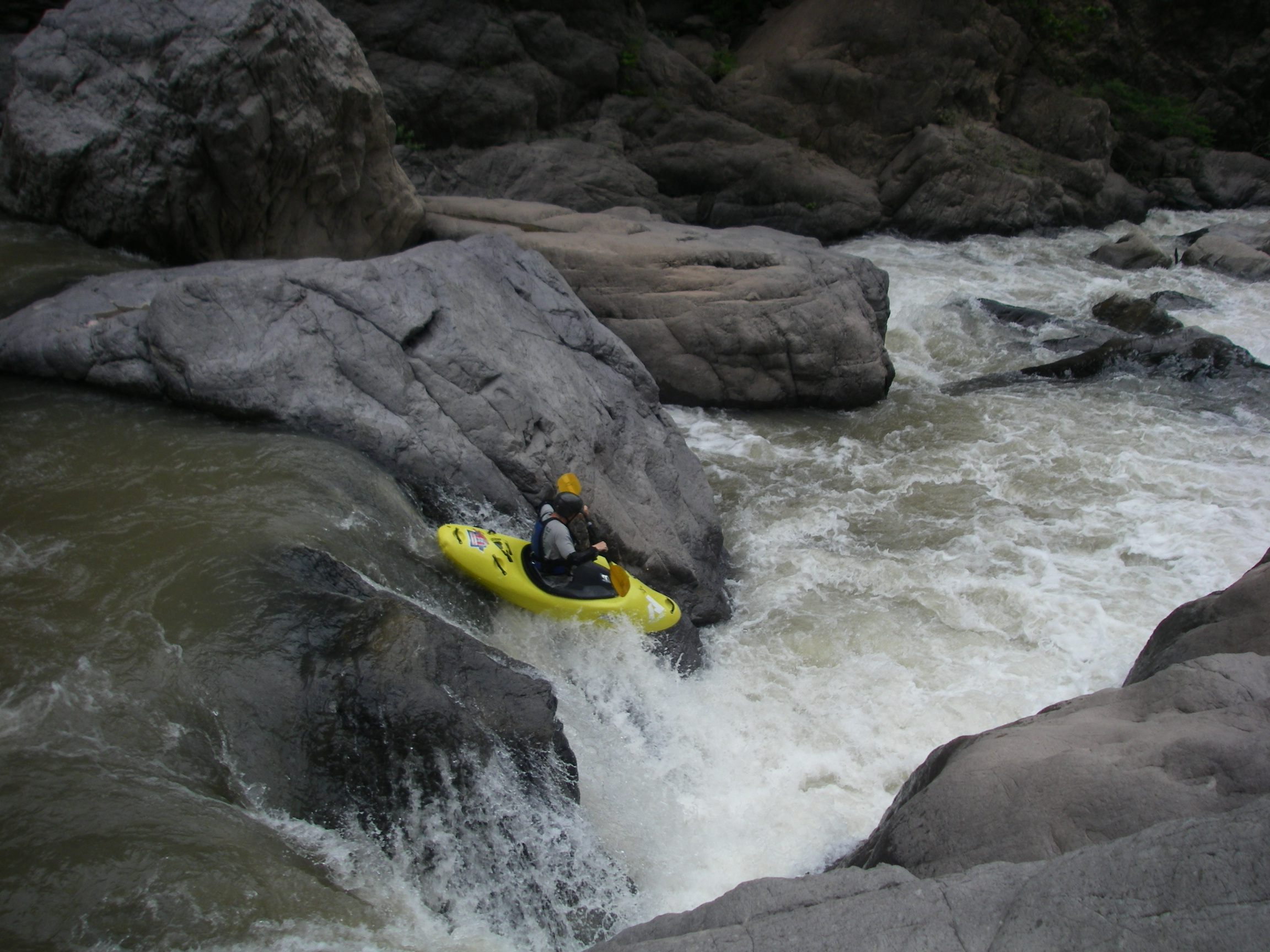
Contos, fully aware of this terrifying story, attempted the river solo anyway. “When I started going down that river, it didn’t have a very high gradient, so it didn’t initially look too bad, but soon there were so many giant boulders that it was just horrific to run. I started getting into these vertical walled gorges jammed with boulders, and it just looked so nasty. There was a lot of potential for pinning.” Contos made it down 31 kilometers, before the jagged masses of treacherous boulders were simply too numerous. He bailed.

As a solo paddler, there are certain cautions he takes into account that simply don’t factor in when traveling in groups. “When you’re in a group, you can bounce ideas off each other about a rapid, the lines you’re thinking of taking, the dangers, the risks. Someone you’re with might see something you’re not considering, and point out danger or problem with your line.”
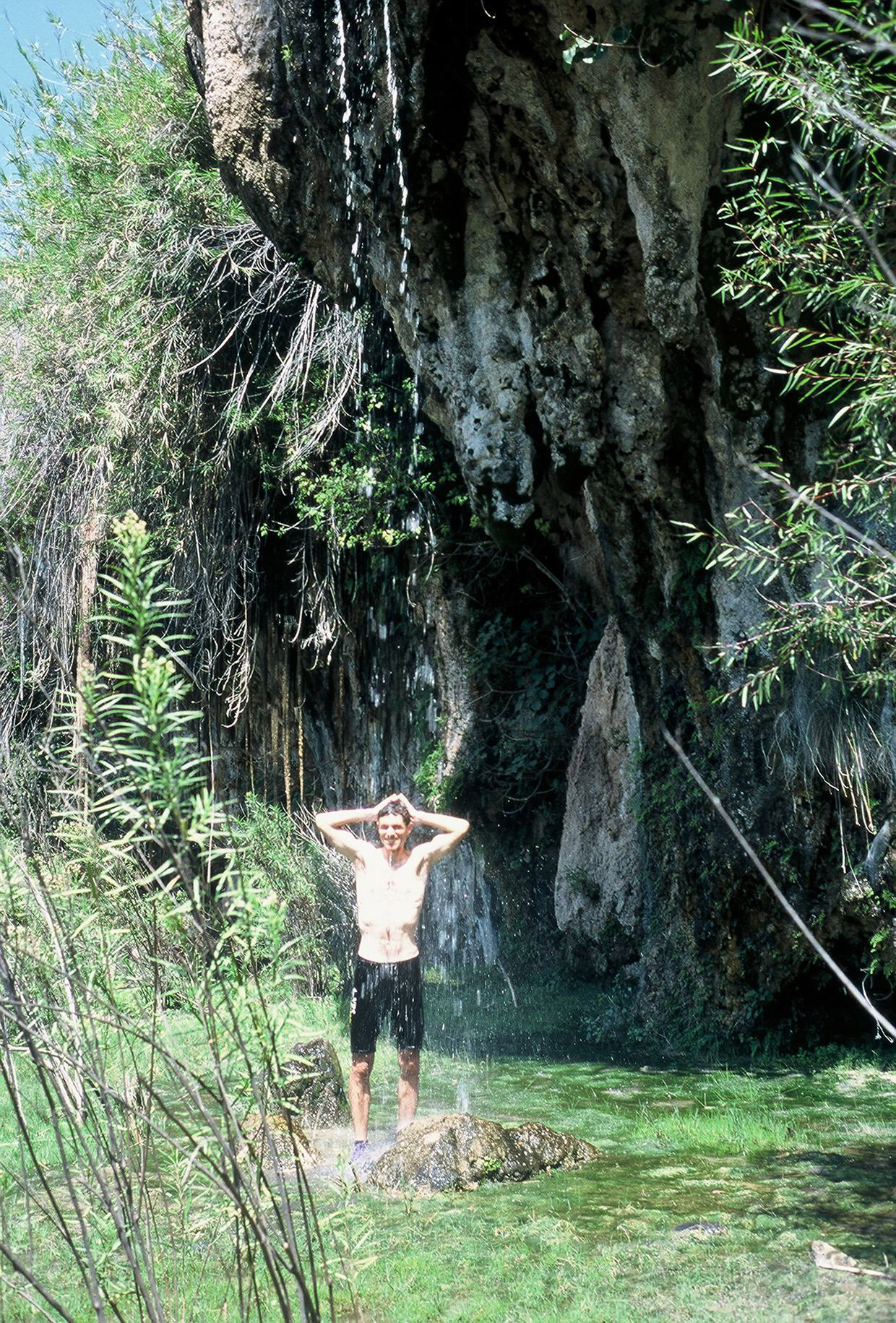
That said, while many may see paddling solo as massively increasing the inherent risk, for the reasons above and other obvious ones (if you’re pinned, there’s no one to rescue you) in some ways it can be preventive. “When you’re alone,” Contos told me, “you’re really just looking for the safest way possible.” There’s no one to impress. “When you’re with a bunch of people and you have cameras rolling, you may take more risky lines to make nice photos and video. When you’re solo, you just want to take the sneak line, the safest way to get down.”
There is no pressure to stick with a river that’s simply too dangerous. If you decide to bail, you bail, like Contos did. He left his kayak by the river, and simply walked out.
(He didn’t accept complete surrender, though. He convinced a pair of friends to come down two weeks later, found his kayak, and continued down the remaining 277 kilometers, covering the entire Mezquital.)
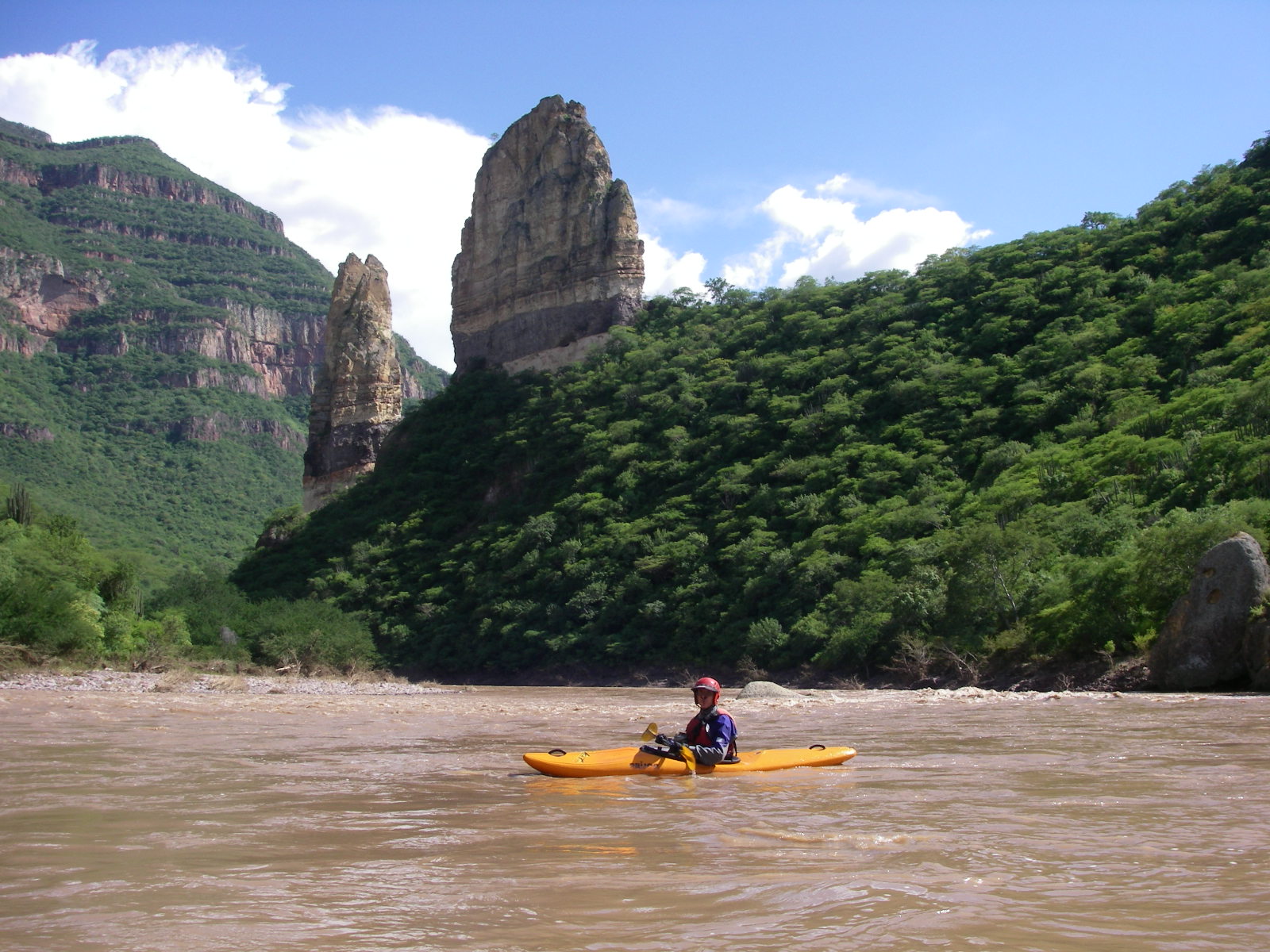
Despite the treacherous nature of paddling alone on an unknown stretch of whitewater, the biggest disaster during his 108 days in Mexico didn’t happen to Contos at all, but to his Mexican friend who drove him to and from each mission. On the way back from dropping off Contos at the San Lorenzo river, the man was driving back alone to Mazatlán on a treacherous one-lane highway known as the Espinazo del Diablo. “All he told me was that he came around the bend and all of a sudden a semi was taking up the entire highway,” said Contos. He swerved and missed the semi, but vaulted his pickup truck off the road. The truck flipped over 300 feet down the hillside, totaling the truck and leaving the man with a fractured skull, broken collarbone, and several other injuries. The driver of the semi didn’t stop, but a public bus found him and the passengers stopped to help. They called an ambulance, but several of the onlookers also stole from the totaled truck, even going so far as to take the man’s wedding ring off of his finger while he was unconscious.

Contos, meanwhile, was on the river for the next five days, blissfully unaware. Luckily the man survived and recovered. Unfortunately, notes and photos from most of his trips, including his tape recorder, were in the car when it crashed, and all of that was lost.
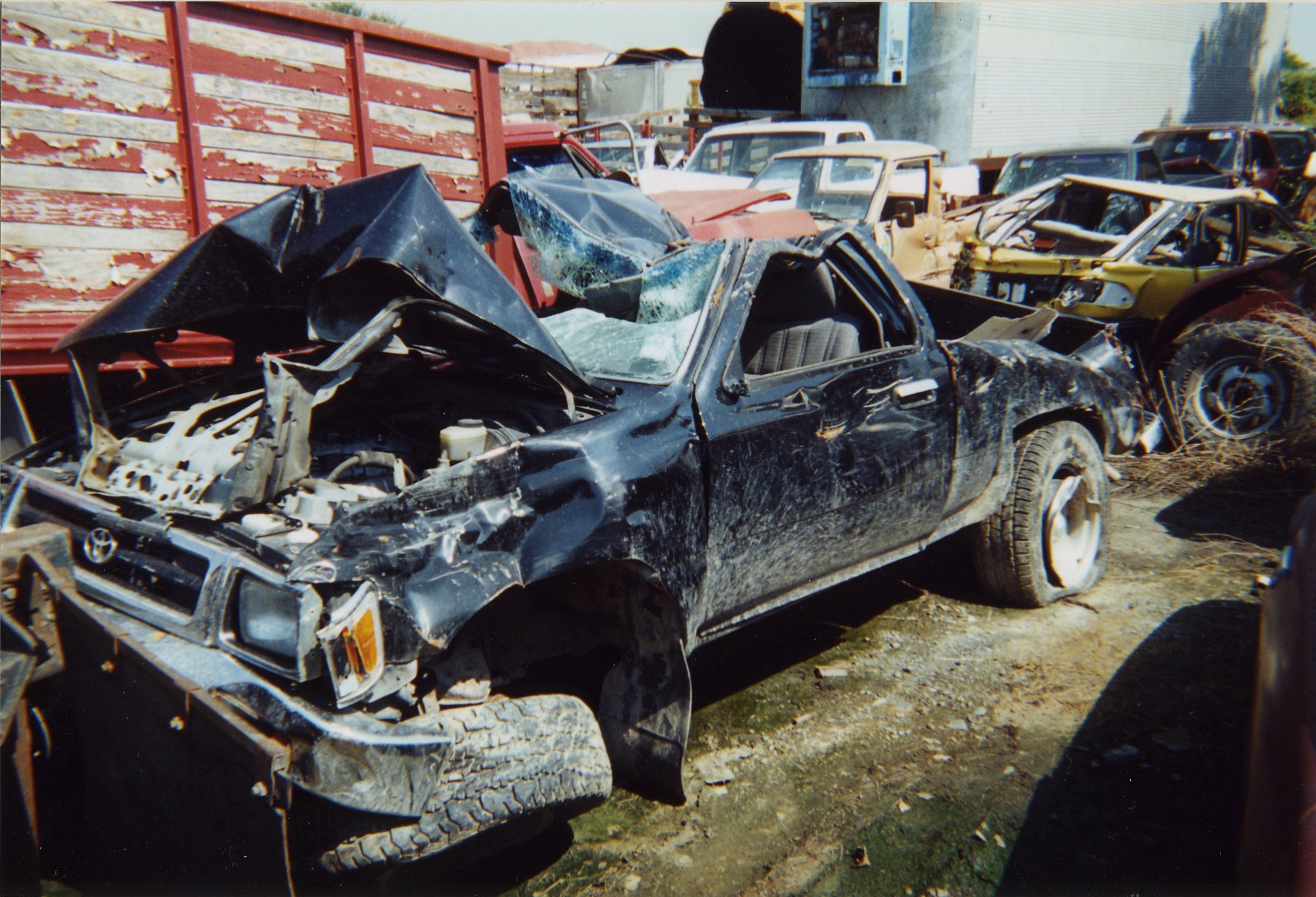
Lost Wanderings
“When you’re paddling alone,” Contos told me, “everything is up to you. Nobody else cares. You need to calculate the decision that will get you through safely, and if you don’t, the consequences can be severe. If you get pinned when you’re alone, no one is pulling you out. Most paddlers never paddle solo on whitewater,” he continued, “particularly a remote first descent. There are people that do that and die or disappear. I’ve lived through several situations where I almost drowned and I had somebody give me a hand to pull me out of the eddy I was in or the place where I was stuck underwater.”

“I’d say the biggest benefit of going solo is that you’re free from restraints of what happens to other members of your group,” Contos said. The more people on an expedition, as Contos sees it, the more potential for unforeseen events that can delay or otherwise hinder progress, from logistics to injury.
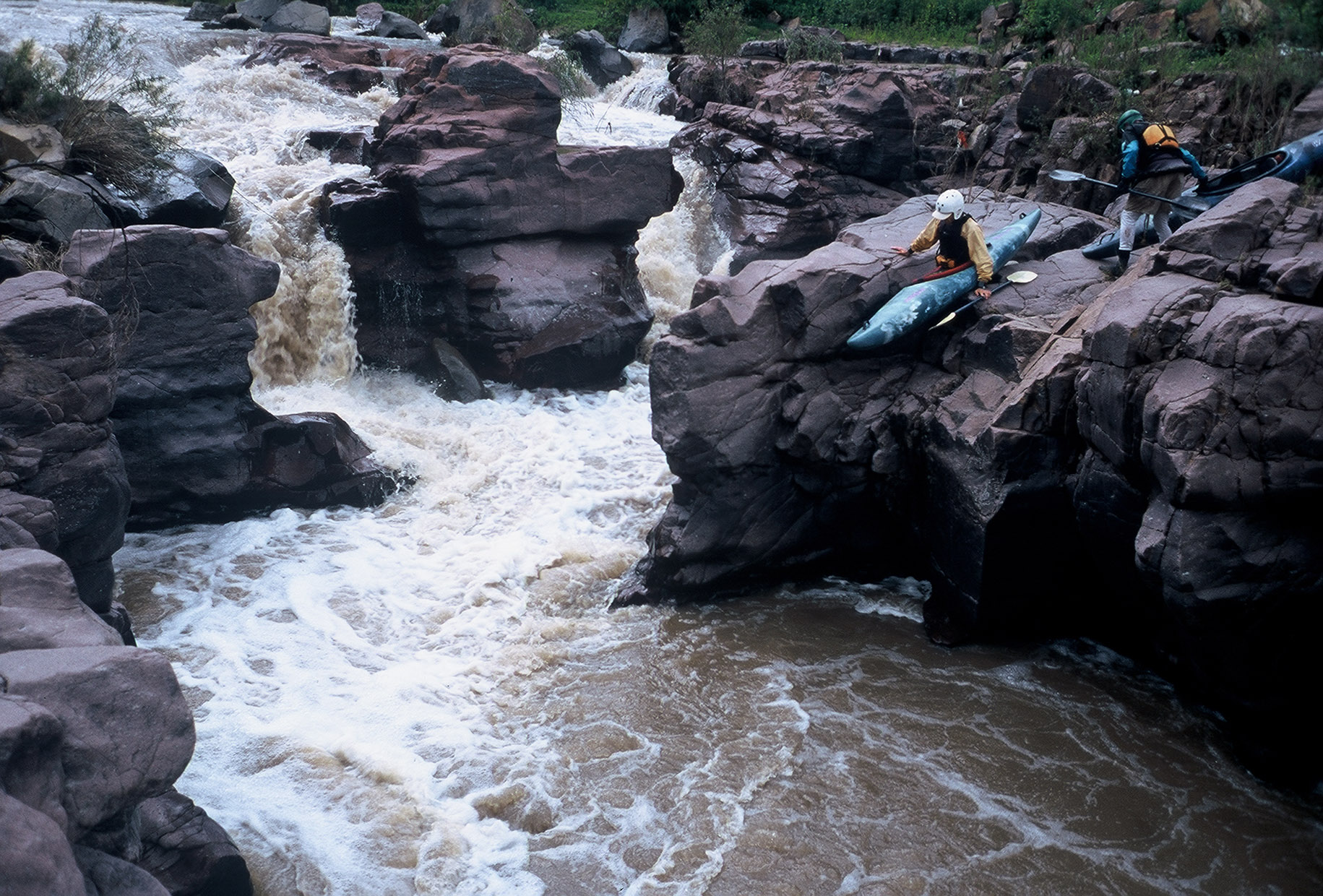
Still, when I asked him if he had to paddle alone, or with groups, for the rest of his life, which would he choose, Contos said he’d paddle in groups, without question. “I like the social nature of it,” he said. “Sharing the experience. When you do something solo, no one will ever know about it. It becomes kind of a lost wandering...”
That’s precisely the reason Contos appreciates the advent of social media so much. “It’s a great benefit,” he told me. “Even if people do something solo, they’re not alone. They can share with others.” During the months he spent in Mexico, and the many years following, when he came back and did more rivers alone, he wasn’t able to share those experiences with anyone unless he wrote an article about it. The beauty of social media, in Contos’ eyes, is that it gives you the opportunity to connect with the world, wherever you are and whatever you’re doing. “It’s also a record,” he said. “Someone can go back and always cite that. In science we publish things and peer review journals, for example, to track who makes various discoveries first, to give attribution to the person who discovered something. In the case of rivers, you never know if anyone did anything. I paddled all these rivers, I never wrote anything about it. No one would know I did that. With social media, you can prove you did something and get feedback right away. I think it’s progress.”
Although Contos published two guidebooks to the rivers in Mexico so far (Norte and Chiapas) he is working on and hopes to publish others during his COVID-19 downtime. After many years exploring the rivers of Mexico in the pre-social media age, Rocky shifted focus to exploring Grand Canyon-style rivers around the world. He also discovered the most distant source of the Amazon and completed the river's first full descent in 2012. Due to witnessing firsthand how dams are destroying many of the rivers he's paddled (such as the Rio Grande de Santiago in Mexico, which now has three dams flooding the section he paddled in 2000), Contos has become a conservation activist, working to publicize, popularize, and protect these little-known rivers. You can find more info on his efforts at www.sierrarios.org
Owen Clarke is a freelance writer currently based in Puerto Rico. He is a columnist for The Outdoor Journal, Rock & Ice, and Gym Climber. He also writes for Friction Labs and BAÏST. Follow him on Instagram at @opops13.













